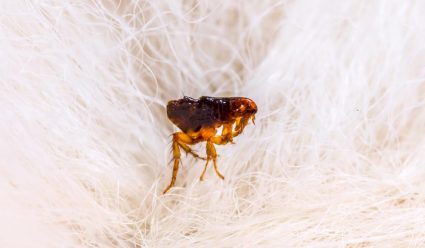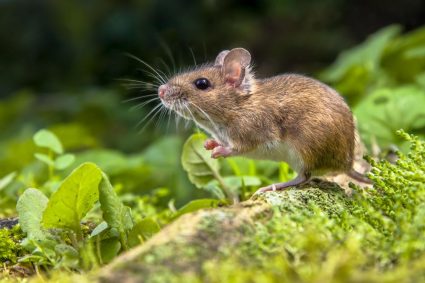
Flying termites, also known as alates or swarmers, are a type of termite that can cause significant damage to a house. If you’ve ever wondered how these pests get into your home, you’re not alone. In this comprehensive guide, we’ll delve into everything you need to know about flying termites, how they enter your home, and what you can do to prevent an infestation.
Flying termites, also known as alates or swarmers, can enter your house through various access points. For drywood termite alates, common entry points include attic vents, beneath roof eaves, door frames, and window frames. Subterranean termites infest homes from the ground up, entering through any cosmetic and/or structural wood that makes contact with the ground-soil. Regular inspections and preventive measures can help keep these pests at bay.
What are Flying Termites?
Flying termites are sexually mature termites that leave their nest due to overcrowding or lack of sufficient food. These termites are part of the reproductive caste in a termite colony and are responsible for establishing new colonies. Physically, they differ from other types of termites and insects in several ways. They have clear front and back wings that are the same length, straight antennae, and a straight waist.
How Do Flying Termites Enter a House?
Flying termites can enter homes through various access points. Some of the most common entry points for drywood termite alates include attic vents, beneath roof eaves, door frames, window frames, and more. Subterranean termites, on the other hand, infest homes from the ground up, dwelling within the soil where they encounter wood scraps, plant matter, dead trees, tree stumps, and sometimes, houses. They can enter homes through any cosmetic and/or structural wood that makes contact with the ground-soil.
Signs of a Flying Termite Infestation
If you notice swarmers (flying termites), discarded wings, hollow or blistering wood, mud tubes, drywood termite droppings, hard-to-open doors and windows, and damaged ceilings, support beams, and other structural elements, you might have a flying termite infestation.
The Damage Caused by Flying Termites
The damage caused by flying termites can be extensive. They feed primarily on wood, compromising the strength and safety of an infested structure. Termites can cause severe damage to human homes, rendering structures unlivable until expensive repairs are conducted. Outward signs of termite damage include buckling wood, swollen floors and ceilings, areas that appear to be suffering from slight water damage, and visible mazes within walls or furniture.
Preventing Flying Termites from Entering Your House
There are several measures you can take to prevent flying termites from entering your house. These include conducting regular outdoor termite inspections and yard maintenance, sealing gaps and cracks, fixing leaks and eliminating moisture, using weatherproof seals under doors, turning off exterior lights during swarming season, and installing termite monitoring stations.
Eradicating a Flying Termite Infestation
To effectively eradicate a flying termite infestation, homeowners can use a combination of natural and chemical treatments such as DIY termite traps, rubber mulch, cedar mulch, orange oil, boric acid, diatomaceous earth, and beneficial nematodes. For more severe infestations, it is recommended to call a professional pest control company.
Professional Help for Flying Termite Infestations
Professional pest control services offer a range of solutions to manage and eliminate termite infestations. These services include inspection and identification, treatment, preventive measures, and follow-up services. Companies such as Terminix, Romney Pest Control, MMPC, Orkin, Extermco Termite & Pest Control, and SafePro Pest Control specialize in termite control.
In conclusion, flying termites can cause significant damage to your home if not addressed promptly. By understanding how they enter your home and taking preventive measures, you can protect your property from these destructive pests. If you suspect a termite infestation, seek professional help immediately to prevent further damage to your property.
Frequently Asked Questions
What is the swarming season for flying termites?
The swarming season for flying termites varies depending on the species and climate. Generally, it happens during the warm and humid seasons, typically spring and summer. However, in tropical climates where it is warm year-round, termites can swarm at any time.
How long does it take for a termite infestation to cause significant damage?
The timeline for significant damage from a termite infestation can vary widely, depending on the size of the colony and the type of wood being consumed. However, it can take several months to a few years for noticeable damage to occur.
Can flying termites harm humans or pets?
Flying termites do not pose a direct health threat to humans or pets. They do not bite or sting. However, their infestation can lead to significant structural damage to homes, which can indirectly pose safety risks.
What is the lifespan of a flying termite?
The lifespan of a flying termite is typically quite short. After swarming and mating, male termites die, while females drop their wings to start a new colony. The female, or queen, can live for several years, producing thousands of offspring during her lifespan.
Are flying termites active at a specific time of the day?
Flying termites, or swarmers, are typically more active during the daytime, especially on warm, calm, humid days. However, some species may swarm at night. They are attracted to light, so they often swarm around windows and lighting fixtures.











